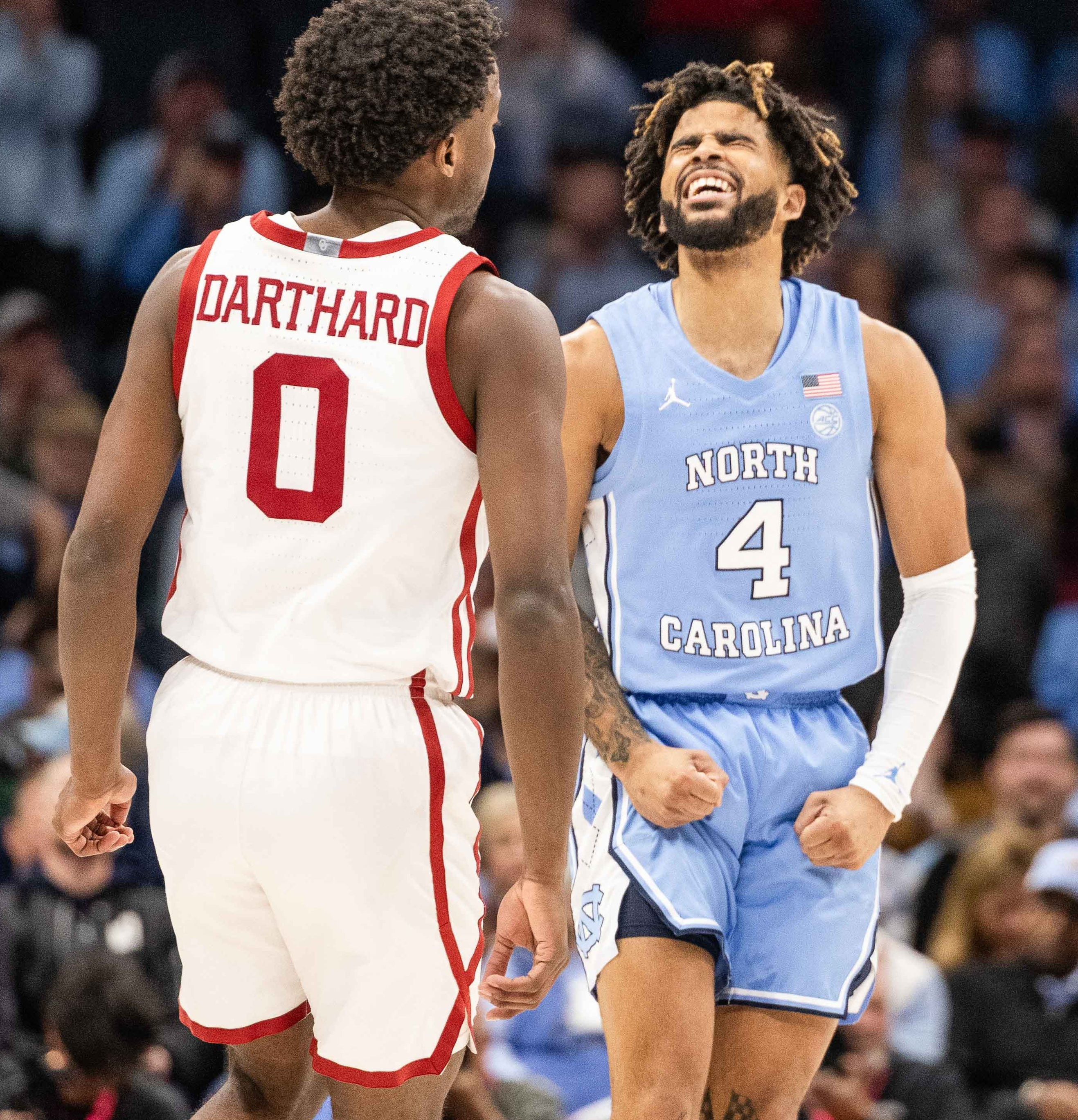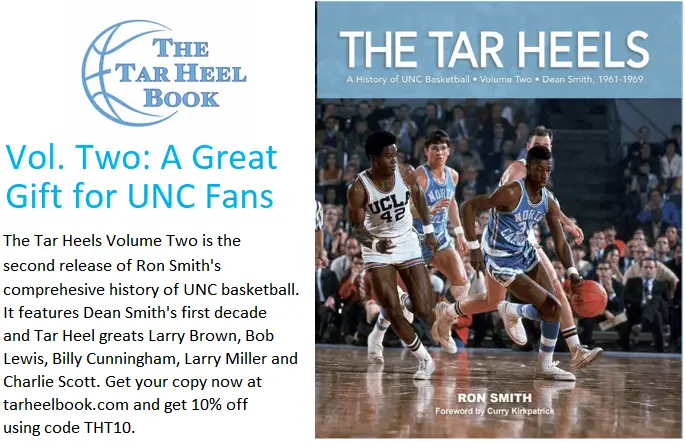By Andrew Kurzeja
North Carolina senior guard RJ Davis continued his run of offensive brilliance during the No. 8 Tar Heels’ 70–57 victory on the road Tuesday against Pittsburgh.
The 6–0 guard tallied 15 points on 6 of 16 shooting to go along with four rebounds and three assists. His three 3-pointers also marked the fifth time Davis has shot 50% or better from deep this season. He also passed Coach Hubert Davis on the all-time program 3-pointers list.
RJ is definitely more than a 3-point point marksman, however. What makes the White Plains, N.Y., product unique on the offensive end is his blend of being able to score and distribute in nearly every scenario imaginable.
He’s averaging 1.00 points per shot (PPS) or better on nearly all shot types this season, which is almost unheard of for a player who shoulders as much of the offensive load as Davis.
With that in mind, let’s examine what makes the future NBA prospect so difficult to defend, the versatility in his scoring ability, and why he’s one of the most efficient players in the country with the ball in his hands.
Slaying the giants
It’s no secret that, with Davis’ limited size, scoring against teams with a lot of length at the Division I level is typically viewed as more of a challenge when compared to his counterparts at his position. Despite his smaller frame, however, Davis has become a master at improvising on his finishes at the rim.
Take this play against Oklahoma, for example. After receiving a ball screen and not having any clear advantage, Davis drives the ball with his left hand against 6–5 Oklahoma guard Otega Oweh and, despite Oweh being in really good position, Davis hangs in the air long enough to adjust the angle of his release while still falling away to get the bucket.
But it’s not just bigger guards. Davis also has an uncanny ability to use his body to create angles and throw off the timing of potential shot blockers. On this play against Tennessee, he rejects the screen toward the baseline. Despite two much taller defenders going airborne with him simultaneously, he can show the ball, bring it back down to his chest, and then switch back to his right hand in one fluid motion.
Then, of course, there’s the magical stuff like this that’s sometimes difficult for you to wrap your head around.
The pick-and-roll maestro
Another area where Davis shines is his prowess as a playmaker out of ball screens. He’s equally good at using or rejecting the screen to create advantages, and we’ve already seen his ability to score inside in these situations.
His ability to find his teammates in various situations because of all the attention he commands just adds another layer that makes the Tar Heel offense so difficult for opposing defenses to guard.
On this play, Davis will use Armando Bacot’s screen and then snake the ball back toward the middle of the floor. As this happens, Seth Trimble’s man completely loses sight of him because of Davis’ threat as a scorer.
You can see a very similar sequence on this play. Instead of using the screen, Davis feels his defender jump out to try and beat him over the top, so he rejects it back towards the baseline. This causes a secondary defender to step up to protect the rim and the perfect opportunity for senior forward Jae’Lyn Withers to cut right behind the help.
Davis has also shown the ability to helm the ship during more structured pick-and-roll actions designed with a specific purpose in mind.
On this one, North Carolina is running a “horns” set where Davis will receive a screen from Bacot while Cormac Ryan lifts out to the perimeter. This action pulls in the defender in the opposite corner to “tag” Bacot on his roll to the basket.

The sheer difficulty of this skip pass over the top to Trimble while dealing with really good ball pressure and a long wingspan obscuring your vision and passing angle cannot be overstated. Still, Davis makes it look effortless while hitting Trimble right in the shooting pocket.
On this play, Carolina is running a ball-screen variation, commonly referred to as “Spain,” where Bacot will receive a back screen from Ryan on his roll to the rim after setting the initial ball screen. This action distorts Villanova’s typical help responsibilities and makes the read for Davis much easier coming off the screen.
A cut above the rest
While I could go on seemingly forever about all the different ways that Davis can score off the dribble or come off of screens away from the ball, the one metric that really jumps off the page at you when you study his game is just how well Davis takes care of the basketball despite his high usage rate.
Among players who average six or more possessions per game as the primary pick-and-roll ball handler, Davis ranks first in the ACC and third in the nation overall in turnover percentage at a mere 9.8%. According to Synergy Sports, only Penn State’s Ace Baldwin Jr. has a lower turnover rate among Power Five schools at 8.2%.
Davis has had four games this season with zero turnovers to his name, including a double-digit assist performance against Charleston Southern on Dec. 29. Out of UNC’s 13 games, Davis has finished with two turnovers or fewer in nine of those games.
Between his crafty finishing, ability to navigate screens both on and away from the ball, his understanding of where defenses are the most vulnerable on any given possession, and his elite-level ability to preserve valuable possessions make Davis a super weapon of sorts that make the Tar Heels a monumental challenge to prepare for on any given night.
Andrew Kurzeja is a video coordinator with seven years of basketball coaching experience at the high school and collegiate levels. He also contributes to Carmichael Radio, a podcast dedicated to the North Carolina women’s basketball team. You can find him on X (formerly Twitter) at @AndrewKurzeja.
Photo by Smith Hardy



